Stucco over painted stucco and parging
I live in the Tampa Bay area of Florida. I want brick-look stucco on my cinder-block house but am not sure it's possible.
My house is L shaped with the street running past the bottom end of the L. The wall that faces the street already has simulated brick stucco but it's been painted several times. To the best of my knowledge, it never had a brick coloring. No one thinks there's any way to remove the paint, so the suggestion is to apply more simulated brick stucco over what's already there.
The interior of the L has wood siding, which has to come off (it's already volunteering to come off). We wanted to continue the fake brick stucco where the wood is but the block underneath the wood siding has been painted black (some kind of waterproofing?). So there, like on the end of the L, I'm being told to apply stucco over some kind of surface coating (not on the block itself).
I've been looking on the internet and don't think it's a good idea to apply the stucco directly over the paint. But that's what every contractor I've talked to wants to do. They also seem to be in a hurry, suggesting that they can finish the job in two days (including the removal of the wood siding). I just saw on your site where they suggest letting the scratch coat cure for two days on a similar job.
Is there any way I can get the fake brick look I want?
I have written about our chipping and bonding method a lot before, but here I can clarify some useful things. Stucco over painted stucco is a popular search.
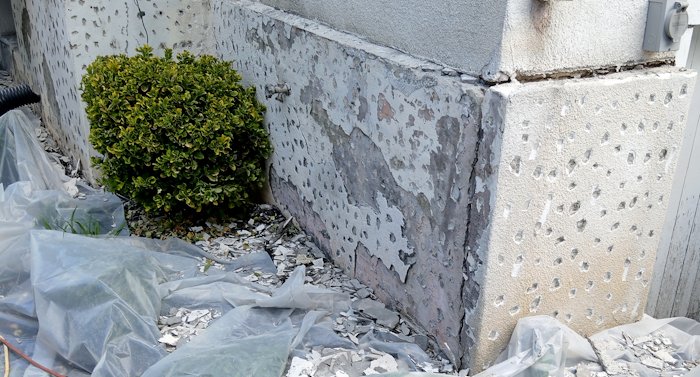
What you are looking at is a wall we have chipped up preparing for my bonding base coat. This also shows what not to do. Someone had recoated the painted stucco with an EIFS basecoat and a synthetic finish, which was peeling off. This EIFS basecoat wasn't made for recoating painted stucco, but made to be put on styrofoam on a plastic cloth. This EIFS basecoat was only less than 5 years old.
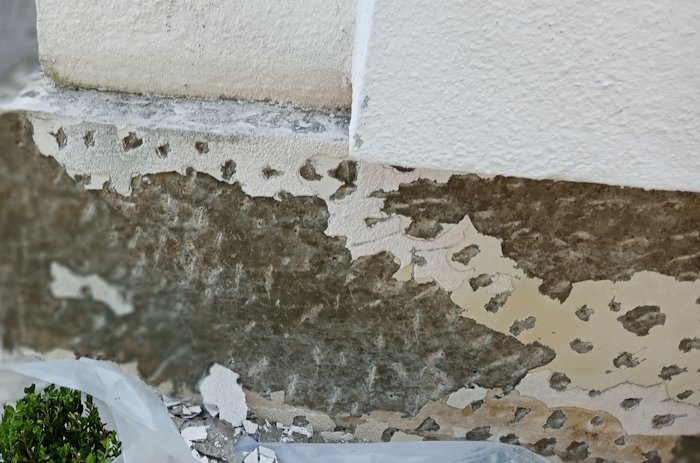
We put deep chips into the basecoat, to assure a good bond. The loose EIFS basecoat was knocked off. If the EIFS basecoat came off easily, we chipped it off. If not, we just put deep chips through it. EIFS basecoats will fail on painted stucco. I am trying to warn the world.
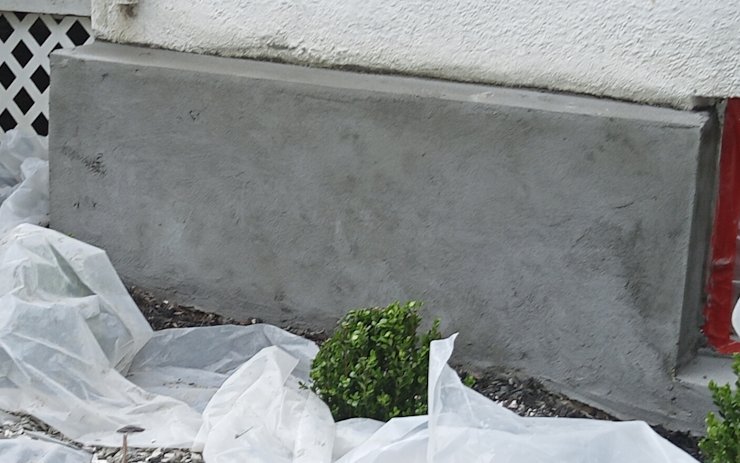
We put on the basecoat in one trip, because the basecoat is less than 1/2". The surface is roughed up for a good bond.
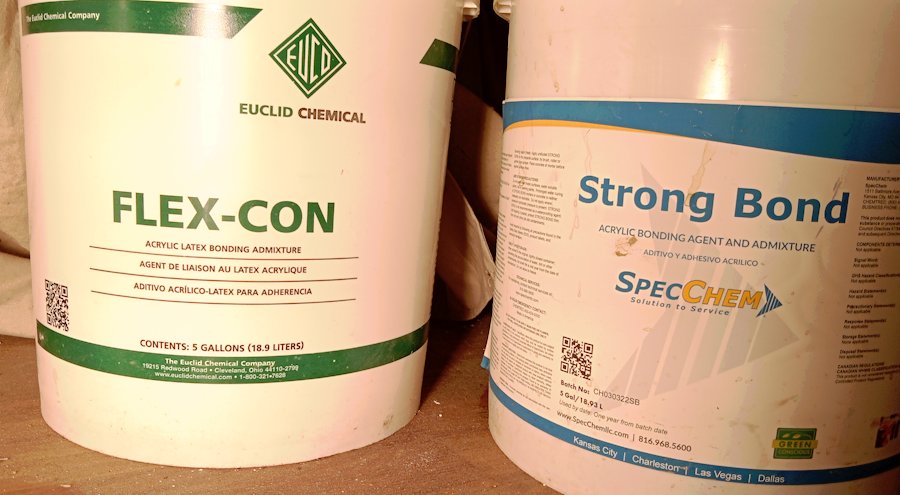
A couple of brands of acrylic bonding admixture. We mix this half and half with water, and mix mortar with it. It makes ordinary cement mortar an adhesive. In extreme cases we mix mortar with pure acrylic.
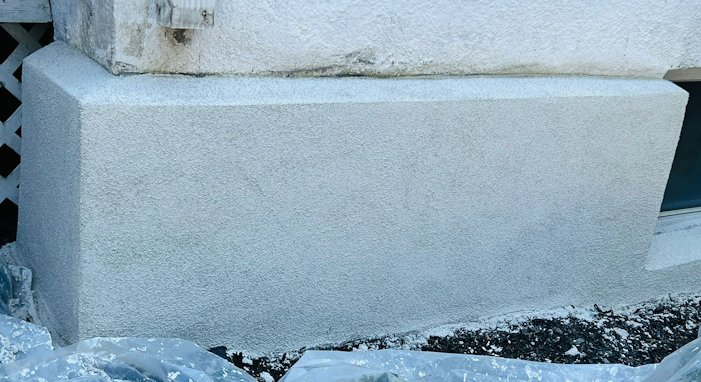
The finish is White portland cement and coarse white sand.
If a full 3/4" stucco is needed, or the existing wall is real wavy, you will want to put on a scratch coat first, and let it set up and partially dry for at least two days. Mortar with acrylic is less porous than normal mortar.
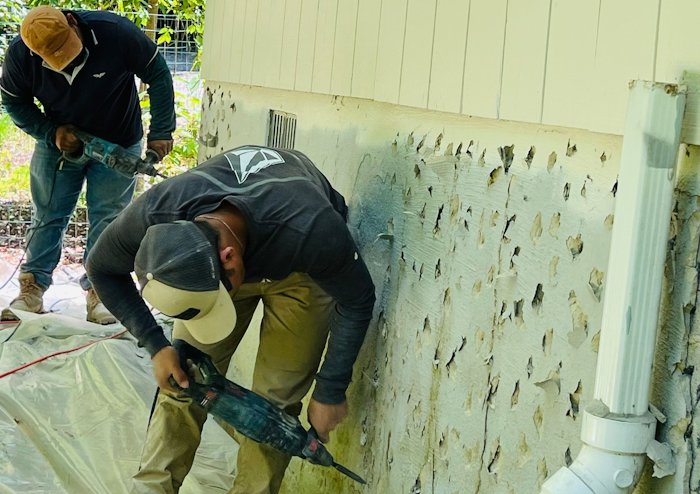
Old parging gets a new lease on life the same way. Parging is chipped up with electric chipping hammers.
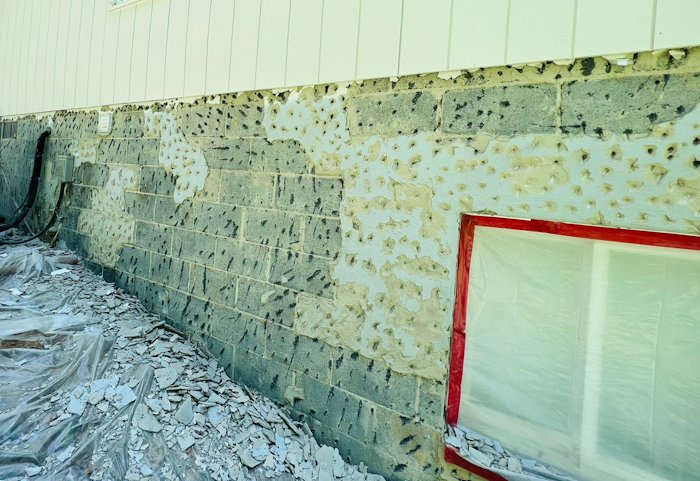
Old parging was real sandy and mushy and came off easily. Parging mortar usually has way too much sand. When you see online to put in 3 parts sand to one part cement, this is what you get, mortar you can write your name in with a nail.
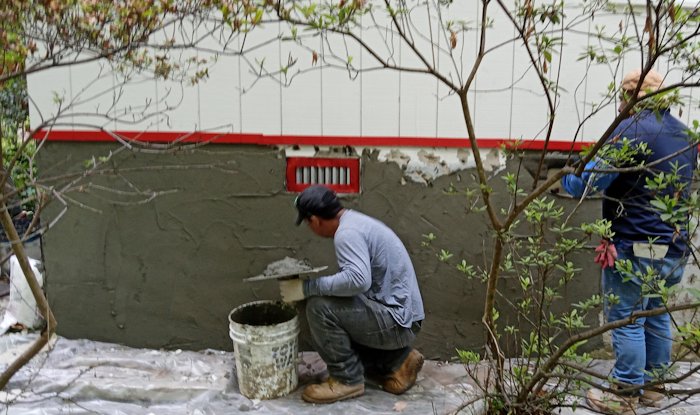
We were able to put on the basecoat the same day, because it is only about 1/2" thick or less.
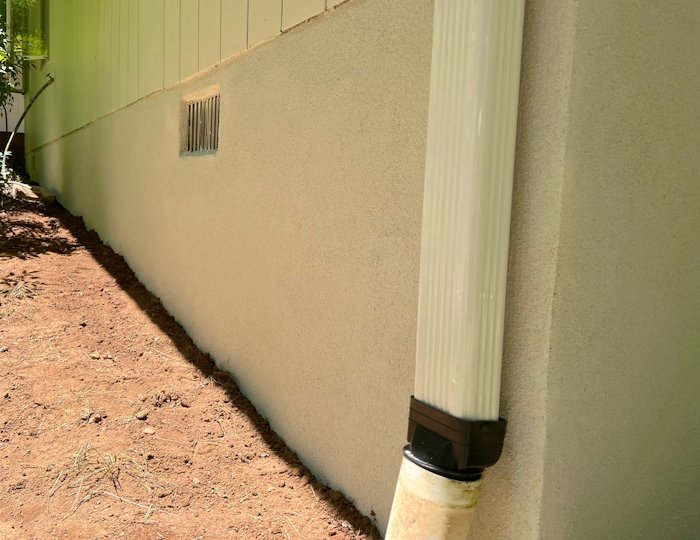
The finish coat is white portland and white sand. Looks better than that parging.
This method produces a very solid, very permanent bond. Acrylic admixtures also double the strength of cement mortar.
Brick face is when stucco is scored to look like brick.I have only done brick face once, and I was amazed how realistic it looked. I hope to find a picture to publish. The tool I used to score the brick joints was an old sawzall blade I found on the ground. It worked perfectly.